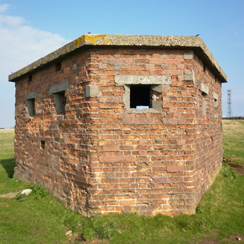Dr Louise Grove presented initial crime prevention recommendations to the Alliance to Reduce Crime Against Heritage (ARCH) in the wake of an English Heritage report that estimated 70,000 heritage buildings and sites were harmed by crime in 2011.
Loughborough University criminologist Dr Grove was part of the team to collate the initial report and, alongside Loughborough Prof Ken Pease OBE, she has been commissioned as a consultant to English Heritage to produce guidelines to help lower these latest figures.
Dr Grove said: “Crimes to heritage assets are not excessive when compared to wider British Crime Survey figures, which tells us criminals see the opportunity for crime; they don’t see the damage to heritage. But if a church roof is stolen or a war memorial damaged it has a wider community impact than a domestic crime, and costs to replace stolen architecture and fittings are typically very high, so it’s important we help put a stop to it.
“There are lessons we can learn from existing crime prevention knowledge and there is clearly a role for education to play. I hope our guidelines, which are still being developed, will add to the good work already carried out by organisations such as English Heritage and will play an important role in reducing crime against these sites.”
The 43-page report, The extent of crime and anti-social behaviour facing designated heritage assets was compiled by Newcastle and Loughborough Universities and the Council for British Archaeology. It can be found on the English Heritage website.
Among the conclusions
Heritage assets in central urban areas face the risks that all buildings in such areas face, and this risk is greater where historic assets are few, and generally in more deprived areas. Heritage crime risk does not vary very consistently between broad regions of England.
Heritage assets experience more criminal damage than other forms of crime. The risks of criminal damage are substantially greater in more deprived areas. Arson is much rarer than other forms of criminal damage. Arson is infrequent but can impact not only as a huge monetary cost but also in severely damaging the historic fabric, while metal theft too risks ‘secondary’ impact beyond the direct cost of replacement.
A strong case can be made for “heritage crime” to be made identifiable in police national computer data, but how can this best be achieved? Whilst data coding categories can be changed (as with the recent separating out of metal theft from infrastructure), the most directly relevant enhancement of official crime recording could be to introduce the question of whether any heritage asset was affected by the crime.
Police have the technical skills required to perform analysis on data they already have, but this would be helped if heritage asset owners and guardians were to consistently report incidents: this study found that one in three of the heritage crimes recalled in the survey had not been reported.









